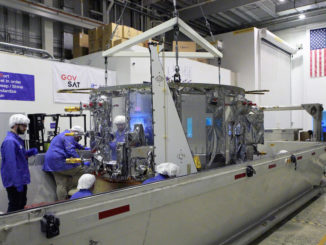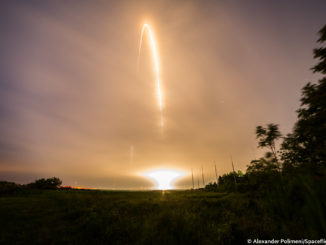First, you see the rocket sputter, then pause suspended in mid-air and crash back to Earth in a blinding ball of flame. If you still have your wits, you brace for the blast wave.
More than 300 tons of expensive, finely-tuned hardware was just destroyed in startling fashion.
Seconds tick by like minutes.
Some people freeze, some click away on their cameras. Others are in pure flight mode — survival instincts take hold.
You’re 2 miles away, and probably safe.
But probably isn’t good enough for NASA officials responsible for scores of journalists, VIPs, corporate executives and official guests invited to view the launch from a restricted area inside the gate of NASA’s Wallops Flight Facility in Virginia.
Rocket parts are flung out of the fireball, spiraling hundreds of feet in the air in every direction. And there is lung-searing, skin-burning toxic fuel on-board, stuff that could have lingering effects over a lifetime after an exposure.
An ill-placed chunk of debris or a gust of wind could spell trouble.
Security guards start yelling.
“Let’s go! Leave everything,” one orders.
“On to the bus,” another barks.
That’s all in the seconds before the shock wave hits.
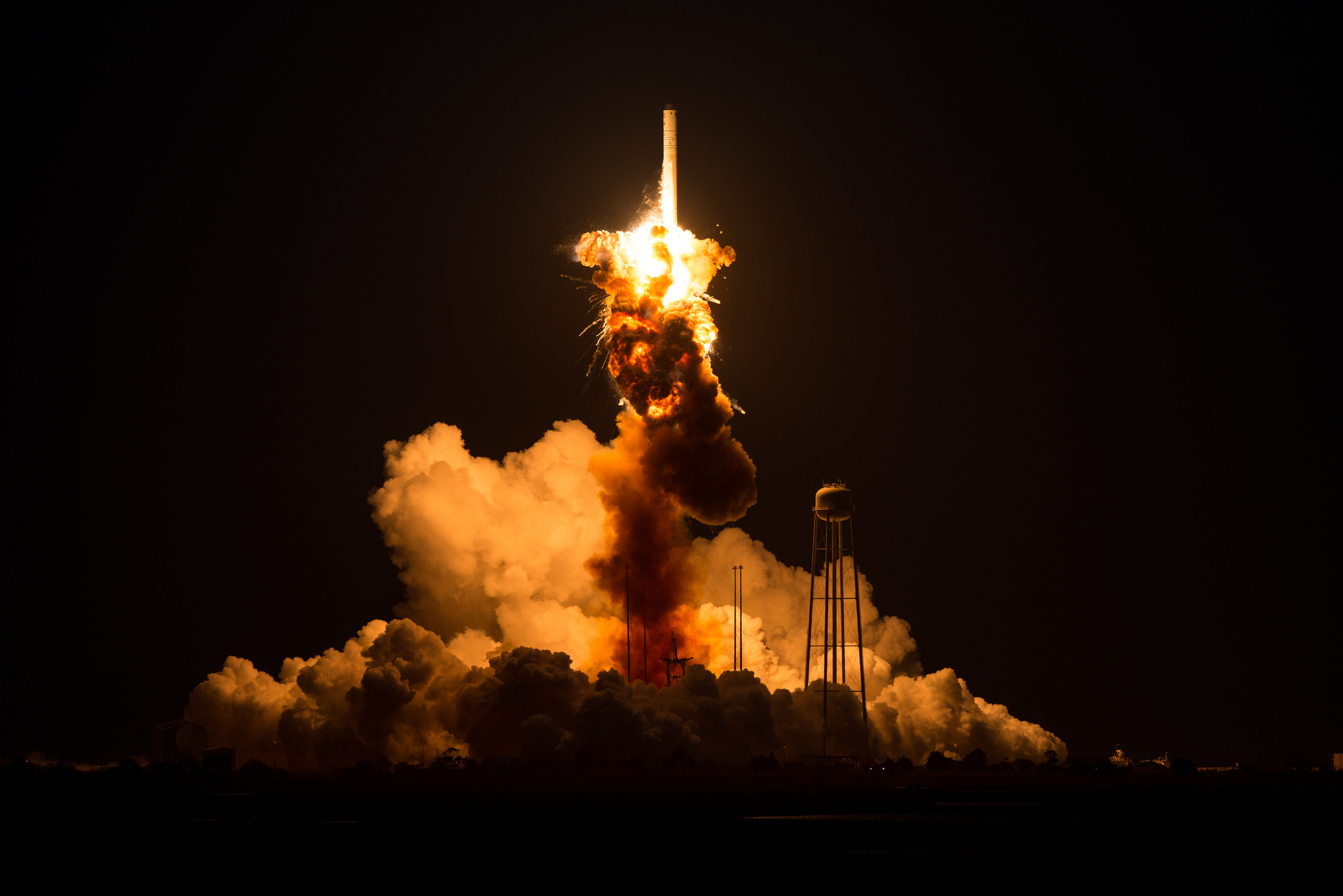
The deafening blast arrives with concussive force, rattling away any lingering confusion.
Screams and cries fill the air as the sound of the rocket blast dissipates.
A turn back toward the Antares launch pad reveals a sea of panicked faces. Behind them, a rising cloud of smoke already stretches thousands of feet over the beach.
Authorities shoo everyone into an air-conditioned coach, taking a head count to make sure no one is left behind.
Panic dissolves into dismay.
Photographers pull up images on their cameras.
They start a first-look diagnosis of what may have stricken the rocket. Reporters call editors and colleagues to give an eyewitness of account of what happened.
Nearby, another group of launch spectators is hustled out of danger.
They had a personal stake in the mission, which was hauling nearly 5,000 pounds of supplies and experiments to the International Space Station.
Tuesday’s rocket launch was supposed to be an early exposure to the thrill of science and exploration for students selected to develop and fly their own experiments to the space station.
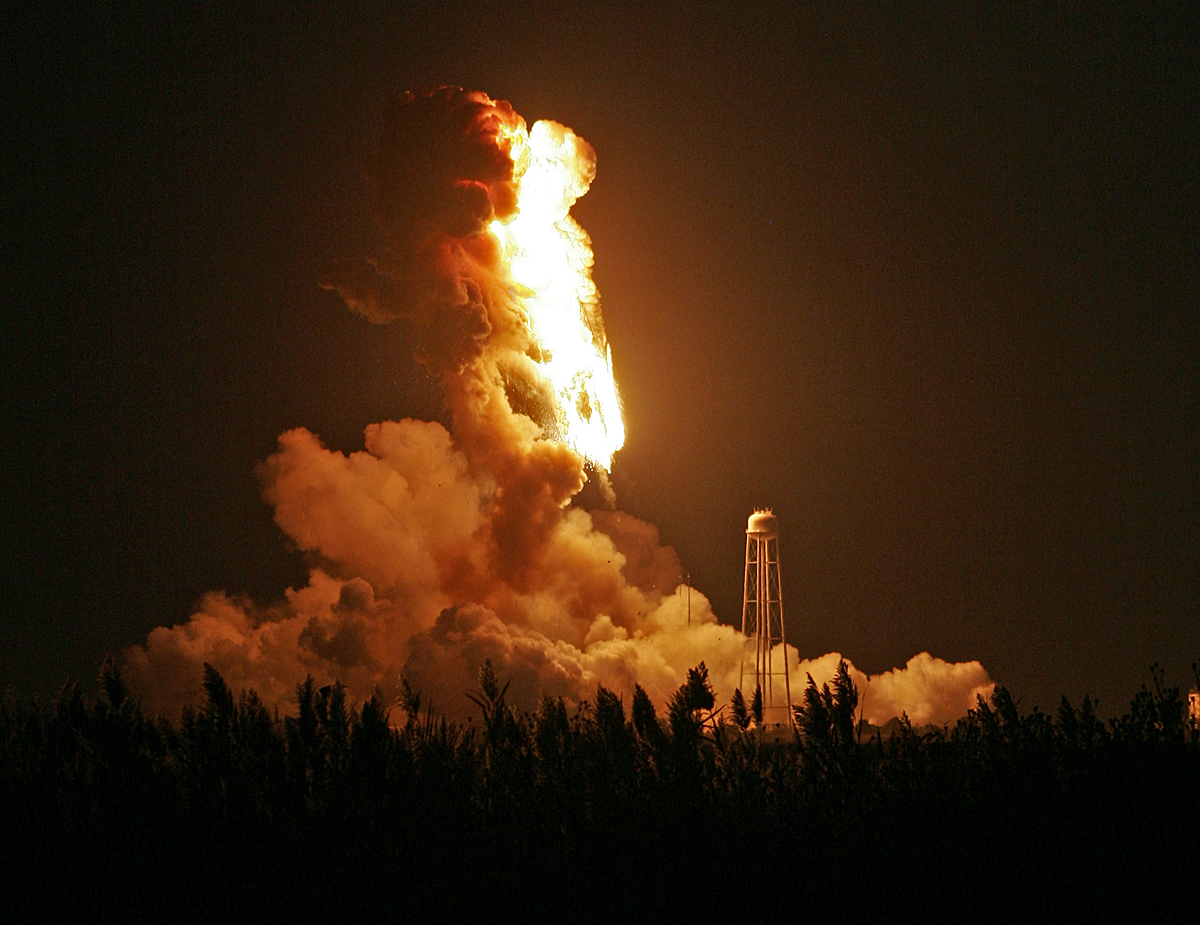
Eighteen student teams from California, Louisiana, Michigan, Missouri, New Jersey, New York, South Carolina, Tennessee, Texas, Washington, D.C., and British Columbia had payloads packed inside the Orbital Sciences Corp. Cygnus cargo carrier on top of the Antares booster.
Some of the students attended the launch in person.
Ranging from fourth-graders to college juniors, the students worked on experiments involving the growth of bacteria and crystals, the development of mosquitos in microgravity, the response of shrimp to space, and the effectiveness of composting in orbit.
The students also provided payloads with soybean seeds and chia plants to measure how their behavior changes in space.
The youngsters — some still in elementary school — viewed the launch from a prime location just a couple of miles away.
Jeff Goldstein, director of the National Center for Earth and Space Science Education, said the students were shaken by the experience, but he told them they will have another chance to see their work launched to the space station.
Goldstein’s group sponsored the student experiments, and he said the teams who lost their work in Tuesday’s launch were guaranteed another chance to fly by NanoRacks, a company that facilitates access to space station research for groups outside NASA.
“They’re OK,” Goldstein said. “We were 1.7 miles away, and we were just in shock as we saw what was happening.”
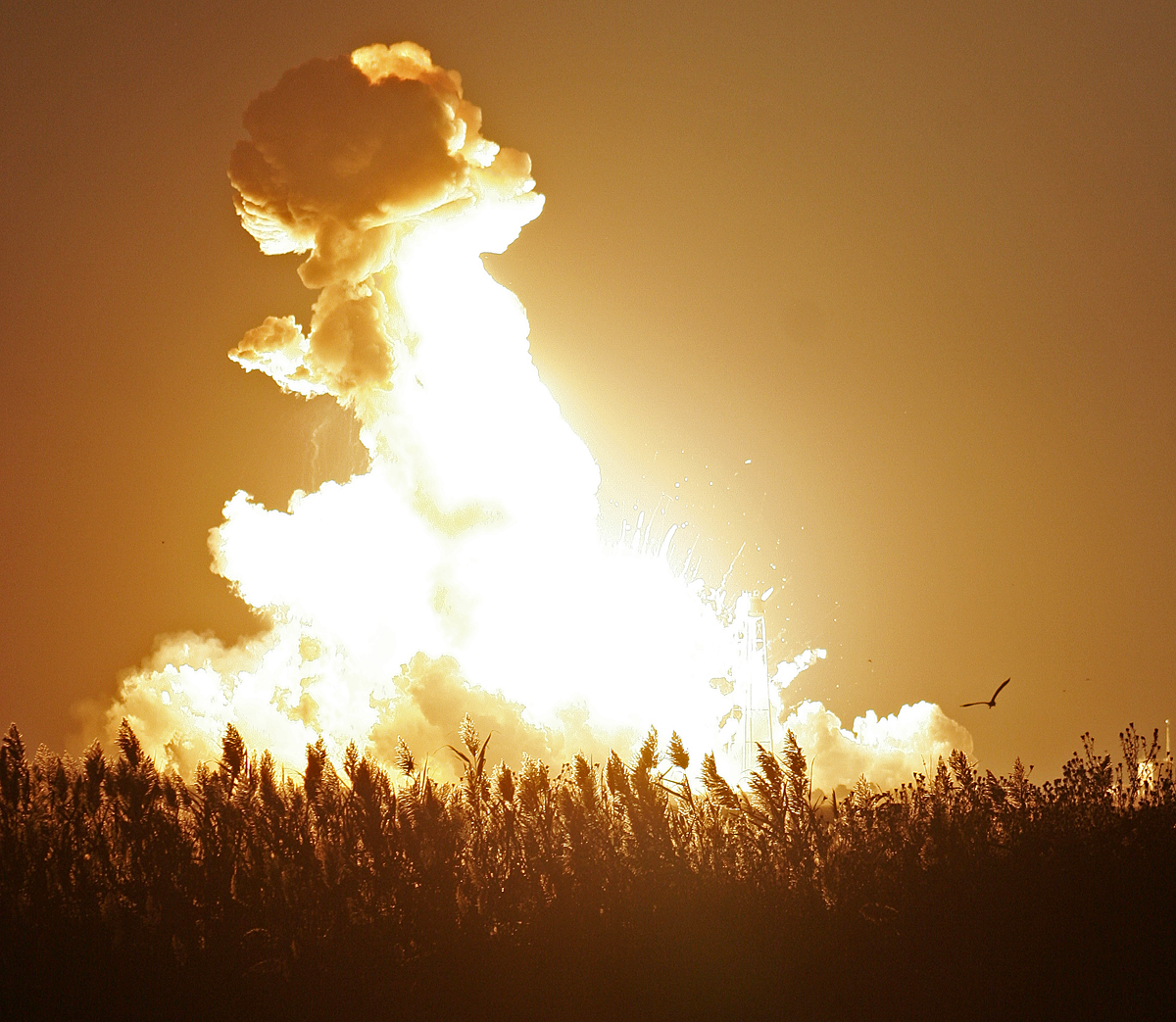
Instead of reveling in the wake of a successful launch, the students were taught a lesson in the unforgiving nature of spaceflight bitterly learned by engineers and scientists around the world.
Rocket launches are inherently risky, even to onlookers, NASA’s safety team told visitors before Tuesday’s spectacular failure.
It’s a prelaunch drill regularly beaten into journalists who cover the space industry.
Drivers granted access to view an Atlas, Delta or Falcon rocket launch at Cape Canaveral Air Force Station are typically asked to park their cars facing a road, allowing spectators to quickly leave the scene if something goes wrong.
At Europe’s spaceport in French Guiana — where Ariane 5, Soyuz and Vega rockets take off — reporters and VIPs are issued gas masks and trained how to use them before entering a restricted viewing site a few miles from the launch pad.
If you’re at Japan’s Tanegashima Space Center for a launch, expect to be handed a hard hat and arm band — for identification purposes after a catastrophe — in the final minutes of a countdown.
All these precautions are taken for observers stationed miles away from the launch pad.
A botched space launch last killed someone on the ground in 2002, when a Soyuz rocket crashed at the Plesetsk Cosmodrome in Russia.
Onlookers dodged injuries in other similar launch failures, including an explosion on Sea Launch’s ocean-going launch platform during a liftoff in 2007 and last year’s Proton rocket crash in Kazakhstan.
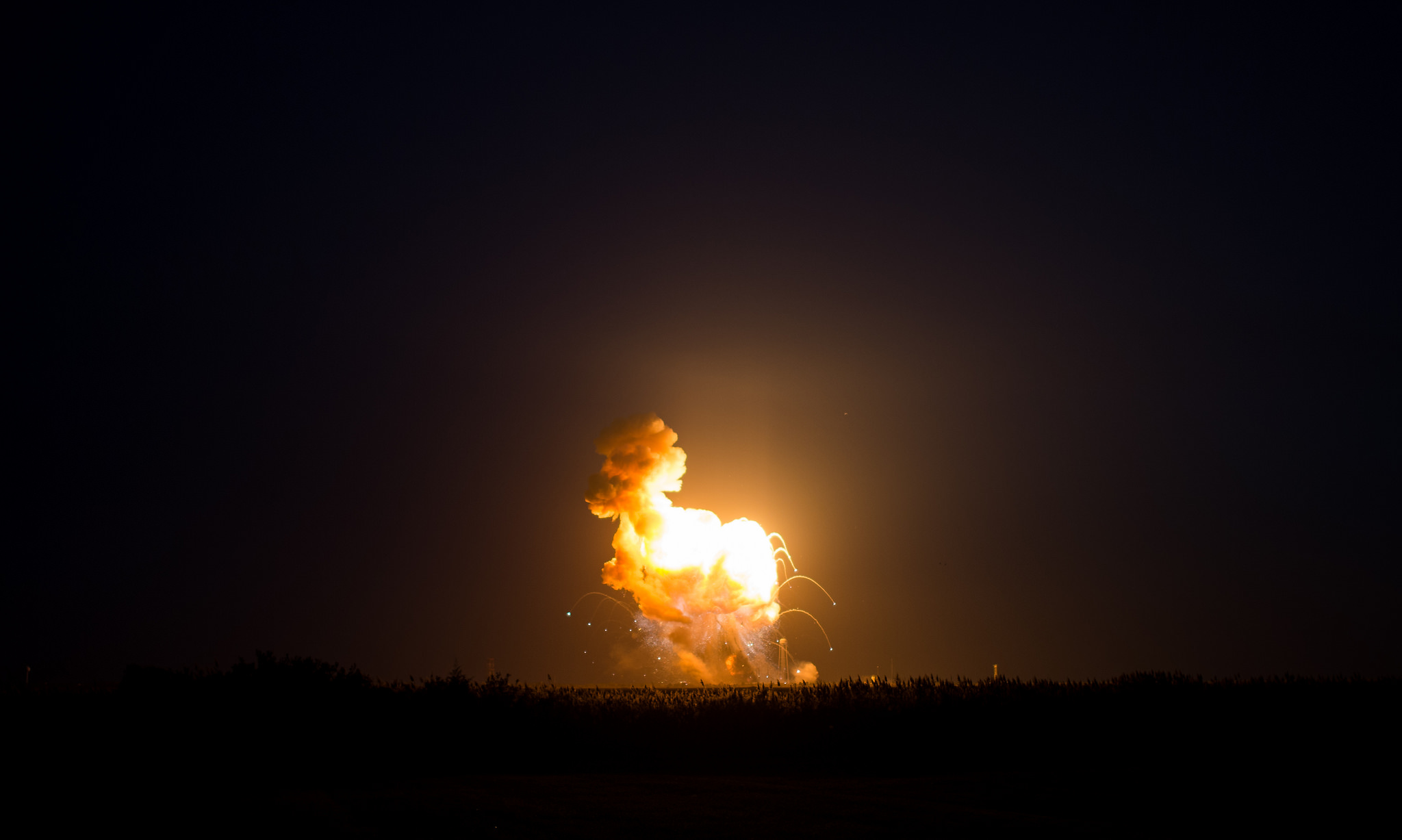
Before giving the green light for a rocket launch from Wallops, safety officials meticulously go over wind patterns and use a computer to model where debris and toxic fumes would spread in the event of an explosion.
If people are present in those danger areas, they must be evacuated for the launch to proceed.
That is standard practice at many launch sites, including Cape Canaveral and French Guiana.
Pilots and boaters also must steer clear of restricted zones near the launch pad and the rocket’s flight path.
Orbital Sciences tried to launch the Antares rocket from Wallops Island on Monday, but a boat strayed into a keep-out area in the Atlantic Ocean, where fragments of the launcher could fall if it disintegrated in flight.
The decision to scrub the launch Monday sparked frustration — even from seasoned space industry operatives — but officials said they followed strict public safety regulations in making the call.
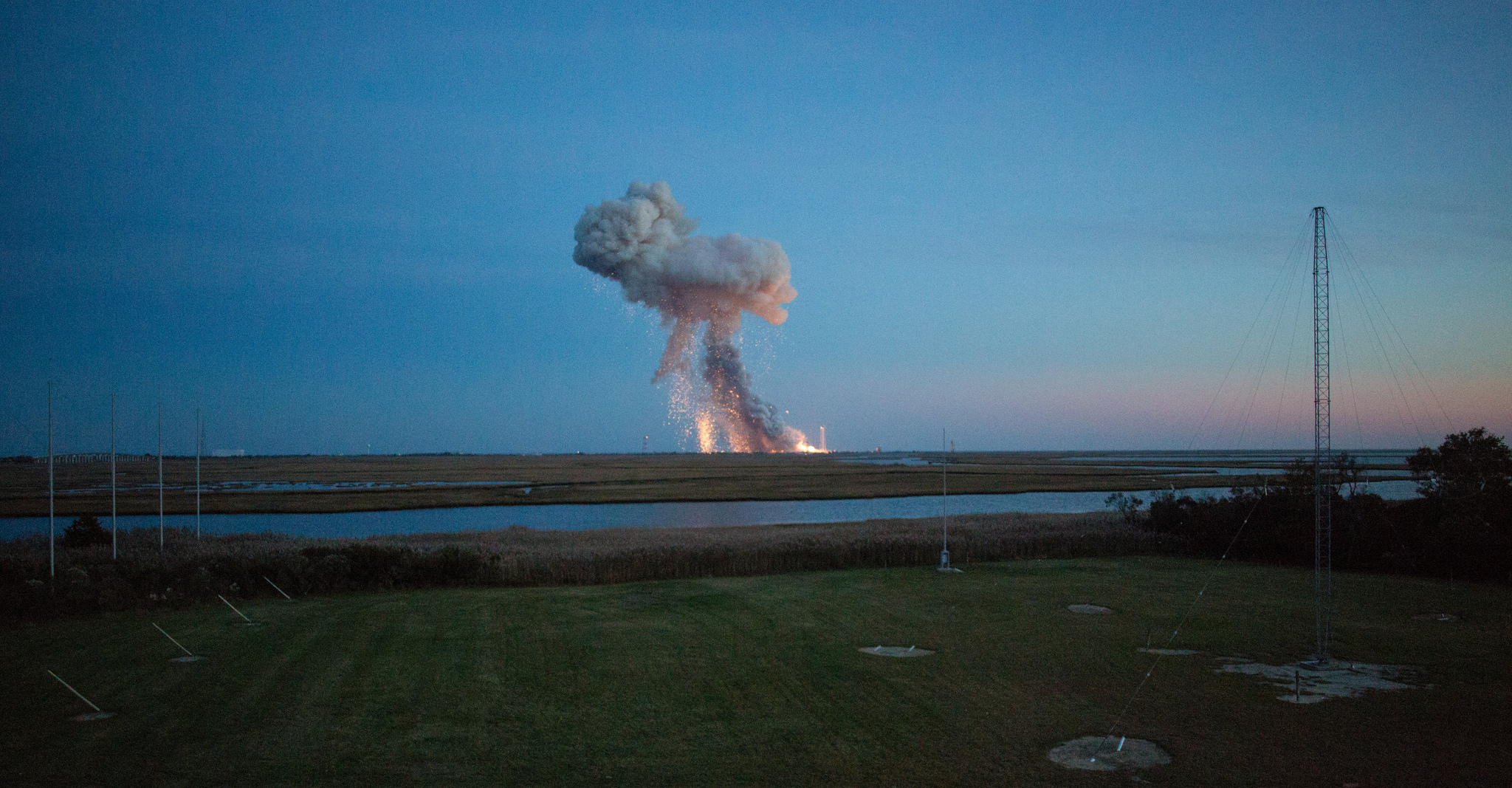
Inside the Wallops range control center, an official with the thankless job of sending a self-destruct signal to the rocket saw the launcher encounter trouble. The signal was sent, firing pyrotechnics along the long axis of the rocket, shutting down the engines and draining more than 50,000 gallons of propellant from its fuel tanks.
The flight termination system is carried on all space launches, even flights with astronauts on-board.
The purpose of the explosives is to prevent an errant rocket from flying toward people, raining debris on unpopulated areas.
No one was hurt Tuesday when the Antares rocket went down.
Safely evacuated out of danger, journalists looked back across the marsh toward Wallops Island.
Columns of smoke poured into the sky as flash fires consumed hundreds of acres of vegetation and unburned rocket propellant.
It looked like a scene from Apocalypse Now, except this wasn’t in a war zone.
It was on Virginia’s tranquil Eastern Shore, and everyone went home to tell about it.
Follow Stephen Clark on Twitter: @StephenClark1.

